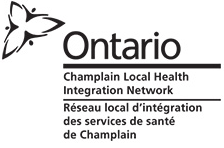Case, Part 1
-
You are seeing a 52-yo male for a same-day visit for “I don’t feel good - I think I have the flu…”
-
He has a diagnosis of schizophrenia and is accompanied by a family member
-
He recently had a several week admission for an exacerbation of psychosis
-
While in hospital, he was given zuclopenthixol (Clopixol) 50 mg/ml on two occasions for aggressive behaviours
-
He was started on Invega Sustenna (extended-release injectable), and his last injection was when he was discharged from the hospital a few days ago
-
Medications are:
-
Paliperidone extended-release injectable (Invega Sustenna) once monthly, recently started during hospitalization
-
Olanzapine (Zyprexa) 10mg po daily for years
-
-
Vitals
-
Temp 39 C | Heart rate 110 bpm | Blood pressure at 160/89
-
-
Physical exam shows
- His arms are extremely stiff with cogwheel rigidity
- He has a decreased level of consciousness.
-
What do you do?
Introduction
-
Neuroleptic malignant syndrome (NMS) is a rare but potentially lethal syndrome related to the use of antipsychotic medications
-
Key features include
-
Abnormal vital signs (such as high fever / hyperthermia, tachycardia, tachypnea)
-
Altered mental state
-
Muscle rigidity, tremors
-
Autonomic dysfunction (e.g. blood pressure changes, excessive sweating, excessive secretion of saliva).
-
Pathophysiology
-
NMS is felt due to dopamine D2 receptor antagonism, in the dopamine receptors in locations such as:
-
Hypothalamus, leading to autonomic dysfunction
-
Nigrostriatal pathway, leading to muscular symptoms
-
Epidemiology
-
Incidence: Low, ranging from 0.02 to 3% among populations taking neuroleptic medication
-
Age of onset: There is no precise peak age of onset as age is not a risk factor in NMS.
-
Gender: Men are more affected than women
-
Time of onset: Most cases (2/3) start within the first week of starting treatment, but it may occur at any time during treatment.
Risk factors
-
Medication-related risk factors
-
Use of high-potency neuroleptic drugs (e.g. Haloperidol) and associated drug susceptibility
-
High-dose medication regimen especially on depot preparations
-
Rapid neuroleptic loading
-
Withdrawal on dopamine agonist medications
-
Treatment refractory for extrapyramidal symptoms
-
Previous episode of NMS
-
Less commonly, D2 receptor antagonist activity may cause the syndrome (e.g. prochlorperazine, lithium, metoclopramide)
-
-
Dehydration
-
Elevated ambient temperature or pyrexia
-
Alcoholism
-
Past history of brain injury
-
Agitation and catatonia
Signs and Symptoms
-
Cardinal signs and symptoms
-
Hyperpyrexia (≥ 40°C or 104° F)
-
Extrapyramidal symptoms (e.g. lead-pipe rigidity)
-
Autonomic instability (e.g. high or fluctuating blood pressure, tachycardia, diaphoresis, incontinence and pallor)
-
Severe muscle rigidity
-
-
Other features
-
Dysphagia
-
Tremor
-
Change in level of consciousness (ranged from confusion to coma)
-
Mutism
-
-
Laboratory findings
-
Leukocytosis
-
Elevated CPK
-
Metabolic acidosis
-
Complications
-
Death (mortality rate ranges from 5 to 76% depending on severity and time of diagnosis)
-
Rhabdomyolysis
-
Permanent neurologic sequelae such as dementia, dyskinesia, ataxia and parkinsonism
-
Other sequelae include respiratory failure, seizures, acute kidney injury and arrhythmias
-
Good prognosis is associated with:
-
Early detection
-
Proper supportive care and treatment
-
Uncomplicated course of the syndrome.
-
History / Interviewing
-
Do you suspect NMS? If so, then ask the patient and/or collateral historians about:
-
Current medication
-
Past allergic, drug use and a previous episode of NMS
-
Progression/onset of symptoms
-
Last vital signs
-
Physical complaints
-
Screening / Diagnostic tools
-
Levenson's criteria for the diagnosis of NMS
-
Are there three of the major criteria?, plus
-
Fever
-
Rigidity
-
Elevated CPK
-
-
Are there four minor signs?
-
Tachycardia
-
Abnormal arterial pressure
-
Altered consciousness
-
Diaphoresis
-
Leukocytosis
-
-
-
If so, then there may be a high probability of NMS
Diagnosis
-
NMS is a diagnosis of exclusion; other medical conditions and psychiatric disorders that mimic NMS should be excluded prior to making the diagnosis.
DSM-5 Criteria
-
Exposure to dopamine antagonist, or dopamine agonist withdrawal, within the past 72 hours
-
Hyperthermia (>100.4°F or >38.0°C on at least 2 occasions, measured orally)
-
Rigidity
-
Mental status alteration (reduced or fluctuating level of consciousness)
-
CK elevation (at least 4 times upper limit of normal)
-
Sympathetic nervous system lability, defined as at least 2 of the following:
-
Blood pressure elevation (systolic or diastolic ≥25% above baseline)
-
Blood pressure fluctuation (≥20 mmHg diastolic change or ≥25 mmHg systolic change within 24 hours)
-
Diaphoresis
-
Urinary incontinence
-
-
Hypermetabolism, defined as heart rate increase (≥25% above baseline) and respiratory rate increase (≥50% above baseline)
-
Negative work-up for infectious, toxic, metabolic, and neurological causes.
Differential Diagnosis (DDX) and Comorbid Dx
|
Malignant hyperthermia (MH) |
Life-threatening condition usually secondary to the administration of:
|
|
Lethal catatonia (LC) |
LC often begins with extreme psychotic excitement, and can then lead to fever, exhaustion and death. Other classical features of catatonia include stupor (e.g. extreme hypoactivity, immobility, minimally responsive to stimuli including pain), mutism, negativism (e.g. amotivation, oppositional behaviour), stereotypic movements, echopraxia, echolalia and catalepsy. It is important to differentiate between LC and NMS, given that LC requires immediate neuroleptic treatment, and on the contrary, NMS requires cessation of neuroleptics. Key differences
|
|
Heat stroke |
Heatstroke usually occurs as a result of prolonged exposure to high temperature or physical exertion rising core temperature. Symptoms
|
|
Serotonin syndrome (SS) |
SS presents with somewhat similar symptoms to NMS, characterized by a triad of:
Ways to differentiate include:
Symptoms usually progress in the following sequence:
|
|
Central nervous system (CNS) infection (e.g. meningitis, encephalitis, neurosyphilis) |
Careful history taking should help different from NMS such as asking about
|
|
Miscellaneous (e.g. allergic drug reaction, toxic encephalopathies, recreational drug toxicity) |
If any of these are suspected, consider sending your patient to ED as additional investigations will be required to specify diagnosis. |
Comorbid Conditions
-
Schizophrenia
-
Bipolar disorder
-
Parkinsonism
Physical Exam (Px)
-
Vital signs
-
Hyperthermia
-
Tachycardia
-
Labile or elevated blood pressure
-
-
General appearance
- Diaphoresis (i.e. sweating), sialorrhea (i.e. excessive salivation)
-
Neurologic exam
- Shuffling gait
- Muscle rigidity (lead-pipe type)
- Tremor
Mental status examination (MSE)
-
Altered level of consciousness such as:
-
Confusion
-
Coma
-
Agitation
-
Delirium
-
Loss of awareness of both the internal and external worlds
-
Disoriented in time and space
-
Inattention
-
Incoherent speech, sound mumbling
-
Delusions and hallucinations, especially visual
-
Investigations
-
CBC (leukocytosis)
-
Urea and electrolytes (metabolic acidosis, hypocalceamia and/or AKI).
-
Arterial blood (acid-base imbalance)
-
LFTs ( high ALT, AST and LDH)
-
CK
-
Urine myoglobin
-
PTT, INR (to detect DIC)
-
UDS (urinary drug screen looking for salicylates, cocaine and amphetamines
-
Blood and CSF cultures (applicable in case if sepsis)
-
Chest XR, head CT and LP (applicable in case of sepsis, of note: there is no particular finding in CSF for NMS except elevated proteins)
Management: Primary Care Interventions
-
If you suspect NMS, stop any neuroleptics immediately.
-
Consider speaking with psychiatry or internal medicine on-call
-
Monitor airway and breathing
-
Contact an Emergency Department to ask about possible transfer
Management: Acute Care Setting (such as an emergency department or inpatient setting)
-
Monitor airway and breathing
-
If patient is worsening, consider
-
Start Bromocriptine at 2.5mg BID or TID, and titrate up to 45 mg daily.
-
-
If severe hyperthermia
-
Use bolus injection of Dantrolene 1-10 mg/kg.
-
Both bromocriptine and dantrolene may be used in combination according to the severity.
-
Management: Medication Treatment
-
Critical step is to discontinue the suspected drug that triggered NMS.
-
In the setting of a primary care provider, limited medication might be available first hand.
-
If available, consider using intravenous (IV) benzodiazepines if patient is agitated. Of note, Physical restraint should be avoided to minimised worsening of the hyperthermia.
-
Consider IV fluids for dehydration.
-
Usage of cooling devices and antipyretics might be helpful to reduce hyperthermia.
-
Bromocriptine and Dantrolene sodium are frequently used in severe cases but there is little empirical evidence for their efficacy.
-
Course
-
Typical course ranges from 2-14 days but may take up to 35 days in some case of depot injections
When to Refer
-
Although rare, physicians need to have a high index of suspicion in presence of numerous risk factors for NMS. When in doubt, send patient straight to the ER.
Who to Refer to
-
Emergency Department
-
Internal medicine on-call
-
Psychiatry on-call
Case, Part 2
-
Given the history of recent initiation of long-acting neuroleptics, along with symptoms of akathisia, agitation and confusion, you wonder about neuroleptic malignant syndrome
-
You have limited resources in your office but give antipyretics to patient in order to treat his high fever.
-
You call the hospital switchboard and speak to the psychiatrist on-call at your local hospital, and it is agreed that the patient should be brought to hospital via ambulance
-
He is admitted and is stabilized in hospital
-
You breathe a sigh of relief that were able to identify this uncommon yet potentially fatal condition
References
-
Gupta S and Nihalani N: Neuroleptic malignant syndrome: A primary care perspective, Prim. Care Companion J. Clin. Psychiatry. 2004; 6(5): 191-194. Retrieved online on Apr 8, 2016 from http://www.ncbi.nlm.nih.gov/pmc/articles/PMC518983/
-
Edmond I: Characteristics of Anesthetic Agents Used for Induction and Maintenance of General Anesthesia, Am J Health Syst Pharm, 2004 61(20). Retrieved April 8, 2016 from http://www.medscape.com/viewarticle/492432_3
-
Chapin James W: Malignant Hyperthermia, medscape news and perspective, 2016, Retrieved April 8, 2016 from http://emedicine.medscape.com/article/2231150-overview
-
Castillo E, Rubin RT: Clinical differentiation between lethal catatonia and neuroleptic malignant syndrome, Am J Psychiatry, 1989 Mar;146(3):324-8. Retrieved April 8, 2016 from http://www.ncbi.nlm.nih.gov/pubmed/2645794
-
Clinical differentiation between lethal catatonia and neuroleptic malignant syndrome, Am J Psychiatriy, 1989 146(3). Retrieved April 8, 2016 from http://ajp.psychiatryonline.org/doi/abs/10.1176/ajp.146.3.324?url_ver=Z39.88-2003&rfr_id=ori%3Arid%3Acrossref.org&rfr_dat=cr_pub%3Dpubmed
-
Osman AA: Lethal catatonia and neuroleptic malignant syndrome. A dopamine receptor shut-down hypothesis, The British Journal of Psychiatry Oct 1994, 165 (4) 548-550; Retrieved April 8, 2016 from http://bjp.rcpsych.org/content/165/4/548
-
Northoff G: Catatonia and neuroleptic malignant syndrome: psychopathology and pathophysiology, J Neural Transm (2002) 109: 1453–1467. Retrieved April 8, 2016 from http://citeseerx.ist.psu.edu/viewdoc/download?doi=10.1.1.464.9266&rep=rep1&type=pdf
-
Berman BD: Neuroleptic malignant syndrome: a review for neurohospitalists. Neurohospitalist. 2011 Jan;1(1):41-7. doi: 10.1177/1941875210386491. Retrieved April 8, 2016 from http://patient.info/doctor/neuroleptic-malignant-syndrome
-
Ambulkar Reshma P: Neuroleptic malignant syndrome: A diagnostic challenge, J Anaesthesiol Clin Pharmacol. 2012 Oct-Dec; 28(4): 517–519. Retrieved April 8, 2016 from http://www.ncbi.nlm.nih.gov/pmc/articles/PMC3511955/
-
Sokoro AA: Neuroleptic malignant syndrome versus serotonin syndrome: the search for a diagnostic tool. Retrieved April 8, 2016 from http://sweb.uky.edu/~zyu224/drug-abuse60/docs/21878660.html
-
Strawn Jeffrey R: Neuroleptic malignant syndrome: Answers to 6 tough questions
-
Empiric evidence clarifies risk factors, causes, and first-line interventions, Current psychiatry, Vol. 7, No. 1 / January 2008. Retrieved April 8, 2016 from http://www.currentpsychiatry.com/home/article/neuroleptic-malignant-syndrome-answers-to-6-tough-questions/b7bf441ad93d8f1d63ee7c61b339f893.html
About this Document
Written by Anne Le Bouthilier (Medical Student, uOttawa Class of 2017).
Reviewed by members of the eMentalHealth.ca Primary Care Team, including Dr’s M. St-Jean (family physician), E. Wooltorton (family physician), F. Motamedi (family physician), M. Cheng (psychiatrist).
Disclaimer
Information in this pamphlet is offered ‘as is' and is meant only to provide general information that supplements, but does not replace the information from a health professional. Always contact a qualified health professional for further information in your specific situation or circumstance.
Creative Commons License
You are free to copy and distribute this material in its entirety as long as 1) this material is not used in any way that suggests we endorse you or your use of the material, 2) this material is not used for commercial purposes (non-commercial), 3) this material is not altered in any way (no derivative works). View full license at http://creativecommons.org/licenses/by-nc-nd/2.5/ca/







